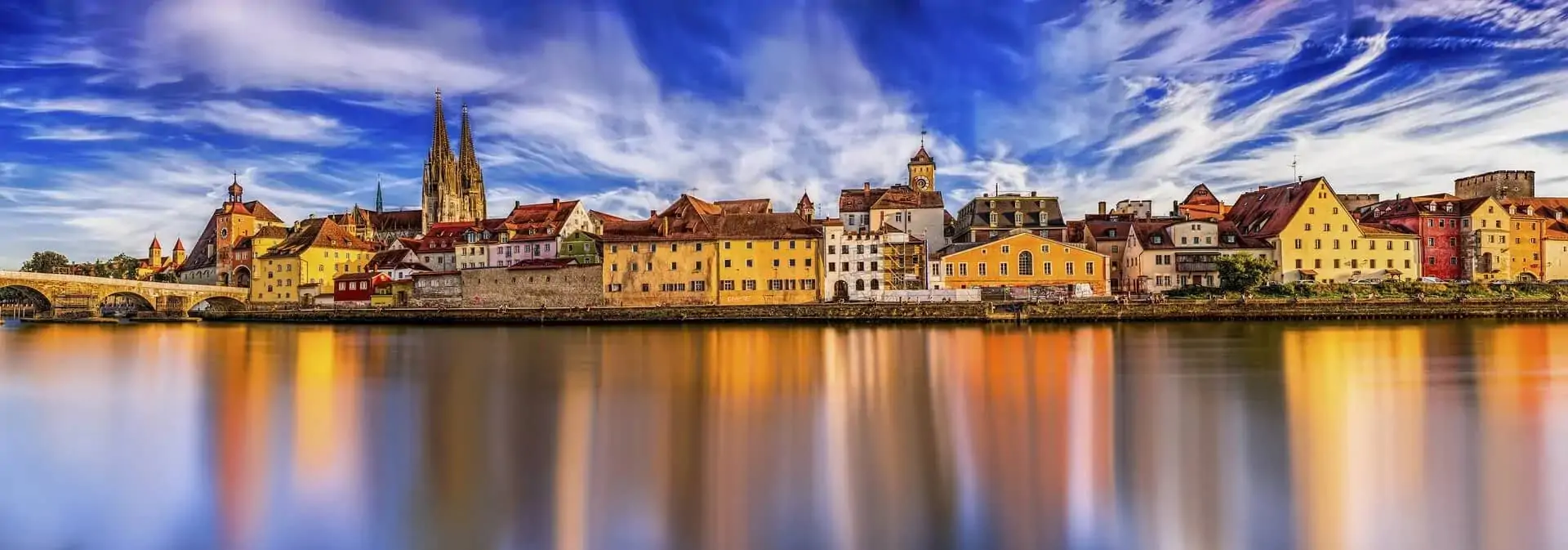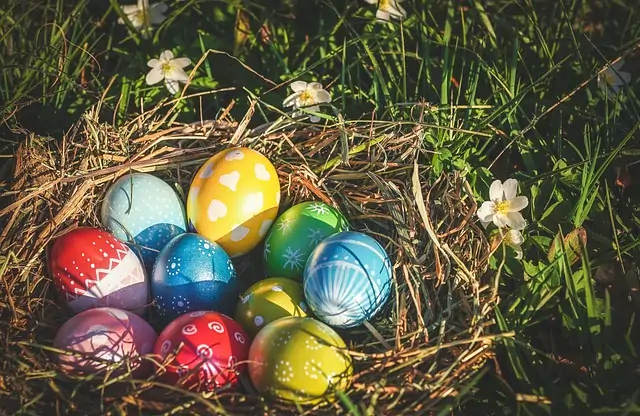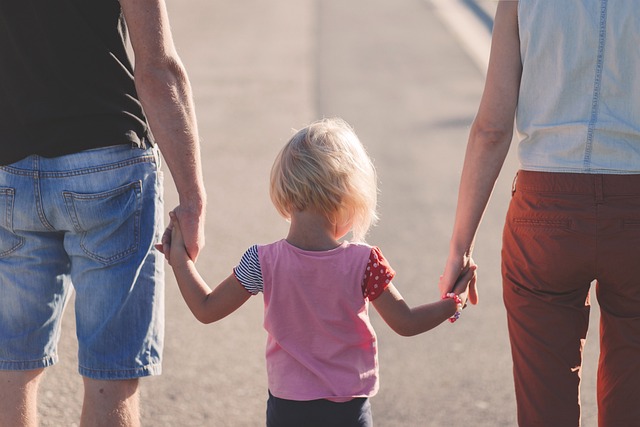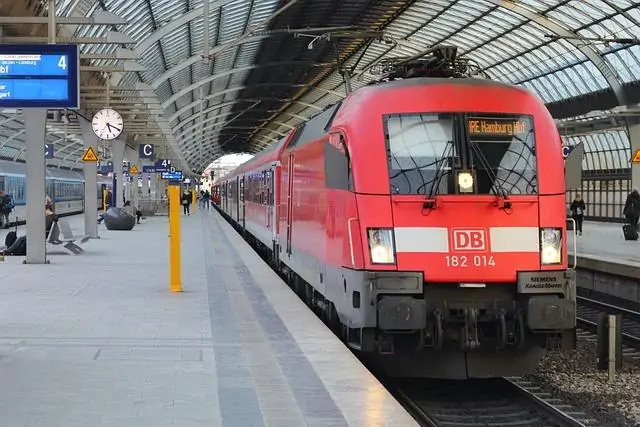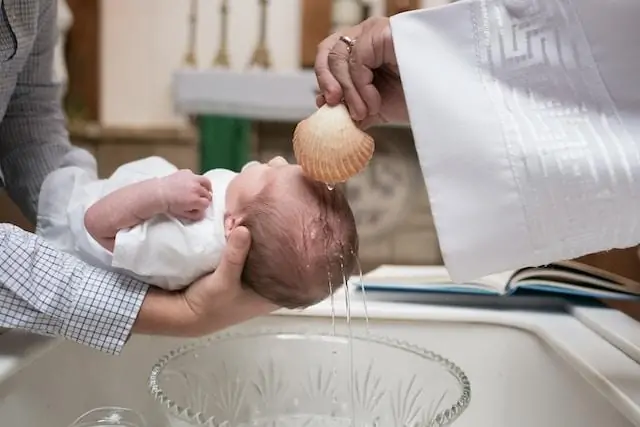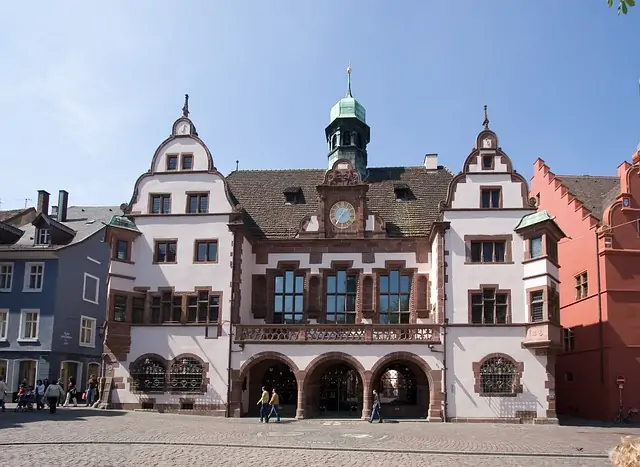This post contains affiliate links. It means that if you click on the links and make a purchase, we will receive a small commission at no additional cost to you. This allows our blog to continue providing you with free information. We only include links and products that we truly believe in. You can read the full disclosure here.
Moving to Germany or new in Germany? Check out our Resources Page for all the help you need!
Ever wondered how Easter is celebrated in Germany? Curious about the delicious traditional foods the German people enjoy during this festive season? Want to know why Easter is such a big deal in Germany and when exactly it falls on the calendar? Well, you’ve come to the right place! In this article, we’re diving deep into the Easter traditions in Germany. Get ready to learn all about it!
Table of Contents
ToggleIntroduction
Back when I lived in Hong Kong, we also had Easter holidays. But we never really celebrated Easter in Hong Kong. Even when I was a kid, we didn’t do anything special on those days. For us, these are just some extra holidays.
Then, I moved to Germany. And I was impressed by all the Easter traditions they had in Germany. Easter is much more festive in Germany and so much fun, especially for kids.
In Germany, celebrating Easter is full of traditions that go beyond just hunting for eggs. Now, let’s take a look at some Easter traditions in Germany.
Read also: Moving to Germany – Complete Guide in English
When is Easter in Germany?
Every year, Easter falls sometime between March and April. It’s a movable feast because it always happens on the Sunday after the first full moon of spring. So, the date changes each year.
Holy Week “Karwoche” is a time to reflect on the sad events leading up to Easter, when Christians celebrate Jesus rising from the dead. Each day in the Holy Week represents a different part of Jesus’s journey, from entering Jerusalem on Palm Sunday to his death on Good Friday.
Palm Sunday
Palm Sunday is the last Sunday before Easter, kicking off Holy Week. It’s all about recalling when Jesus entered Jerusalem and people used palm branches to welcome him.
In some churches in Germany, palm branches are blessed with holy water. And there’s a special reading of Jesus’ suffering and death. After that, everyone heads to the church with their palm branches.
Holy Monday and Holy Tuesday
These aren’t as big in the church calendar.
Holy Wednesday
This is also called Spy Wednesday because people remember when Judas betrayed Jesus.
Maundy Thursday (Gründonnerstag)
This day kicks off with a German tradition of cleaning called “Osterputz” or spring cleaning. This is the day of the Last Supper. Gründonnerstag sounds like “Green Thursday”. It may be linked to the ancient tradition of eating fresh green herbs and leaves in spring to refresh the body and soul after winter. So, many people in Germany celebrate by eating green foods like spinach, salad, or other green veggie.
Many German households also serve a hearty “herb soup” on this day. The soup is made with broth, potatoes, and fresh herbs like chervil, wild garlic, watercress, dandelion, and chives.
In some regions in Germany, Maundy Thursday is also seen as a lucky day for planting crops or tending gardens. People believe that if they plant seeds or take care of their plants on this day, they will get a lot of healthy crops later on.
Good Friday (Karfreitag)
This is a public holiday in Germany. On this day, many people remember Jesus’s death on the cross. It’s a quiet holiday in Germany, and public dancing events are banned.
Traditionally, people eat fish on this day. So, you might find families enjoying a fish dinner together. Back in the day, cod stew was a popular dish. But nowadays, German people also make fish fillets served with delicious sauces made from local favorites such as char, trout, or sea bream.
But no meat is eaten on this day, especially in religious families. (I don’t understand why but many German people don’t consider fish as “meat”)
Holy Saturday (Karsamstag)
This is a time of waiting and remembering Jesus’s time in the tomb. Churches often hold a special service called the Easter Vigil. In some places, Easter fires are lit on Saturday evening.
Holy Saturday also marks the end of Lent (the fasting time).
Easter Sunday (Ostersonntag)
This is the big day! People in Germany celebrate Jesus rising from the dead. Families gather for a festive Easter dinner, often featuring lamb as the main dish. After church, it’s time to enjoy a delicious meal with loved ones.
In Germany, eating lamb during Easter is a tradition because it symbolizes Jesus Christ, who is often referred to as the “Lamb of God.” Some families might have roasted lamb with asparagus, potatoes, and salad, while others opt for Rouladen and potato dumplings. Sometimes, people also make rabbit, ham, and pies because you can eat meat again on Easter Sunday.
Easter Monday (Ostermontag)
This is a public holiday. It is not part of the Holy Week, but it’s still a family day. Many people spend it outdoors, enjoying activities like hiking or picnicking as they celebrate the arrival of spring.
Read also: Church Tax in Germany – How to Stop Paying It?
What are some traditional foods during Easter in Germany?
In Germany, people enjoy a variety of yummy foods during Easter, like lamb, potato dumplings, hard-boiled eggs, asparagus, green sauce, etc. Besides, different regions might have their own unique Easter dishes. Let’s take a look at some more traditional foods you might find during Easter in Germany.
Green Cake (Grüner Kuchen)
This is a North Hessian cake (also called Bacon Cake) eaten on Maundy Thursday. It’s made on a baking sheet with a rye sourdough base and topped with a greenish mixture, colored by the first winter onions sprouted in the early spring.
German people in those regions usually eat this on Maundy Thursday because it is the day to eat green food. Christians believe that by eating green food, one absorbs the power of spring and its healing effects for the whole year.
Easter brunch
Easter Sunday is a big deal for German families. They all gather around for a special Easter brunch. They’ve got a spread of different Easter bread “Osterbrot” and spreads on the table. It’s also an Easter tradition for kids in Germany to get involved, painting the eggs and adding cute patterns like bunnies or flowers.
A yummy tradition is having braided sweet bread for breakfast over Easter weekend. It’s made with butter, milk, and eggs, and mixed with raisins or bits of candied peel. Then, they braid it into three strands to symbolize the Holy Trinity. They call it “Hefezopf” or sometimes “Hefekranz” if it’s in a wreath shape.
Sometimes, they even stuff the bread with nuts and dried fruits. They love to enjoy these Easter treats with some butter or jam.

Easter lamb cake
There’s this cute tradition in Germany where they make a special cake shaped like a lamb for Easter. They bake a white cake in a mold shaped like a lamb and then decorate it with white icing.
Lambs are often seen as symbols of life, peace, and purity because of their fluffy white fur. It’s a sweet way to celebrate Easter because it’s said to represent Jesus Christ as the sacrificial lamb of God.

What is lent?
Lent is a fasting time. Ash Wednesday (Aschermittwoch) marks the beginning of Lent, a time of fasting and reflection for Christians around the world. On Ash Wednesday, people go to church to get a cross of ashes on their foreheads. It’s a reminder that humans come from dust and return to dust. Lent lasts for 40 days, not counting Sundays, and ends on Holy Saturday, the day before Easter Sunday.
While Ash Wednesday isn’t a public holiday in Germany, it’s considered a quiet day in many parts of the country. Some states have special rules, like limits on events or different business hours.
Fasting during Lent
During Lent, many people fast for 40 days as a religious practice. This tradition comes from stories in the Bible. In the Middle Ages, Lent meant strict rules, like no meat except fish and no eggs or dairy.
Catholics fast and avoid meat on Ash Wednesday and Good Friday, but others can choose their own fasting practices. Some might give up specific foods or drinks. For example, chocolate or alcohol. Some others might skip meals or fast for whole days. Meat, alcohol, and entertainment are off-limits on Ash Wednesday and Good Friday.
I still remember when I first started working in Germany, many of my colleagues were fasting during the Lent period. They would come with us to the canteen during lunchtime. But they wouldn’t eat certain types of food (e.g. meat). I didn’t understand at that time because that was the first time I heard about fasting. Before I moved to Germany, I had never heard of fasting in Hong Kong. So, it was a very interesting culture I learned in Germany.
Read also: How I Quit My Job And Move Abroad
Easter egg
Painting eggs is a fun Easter tradition in Germany that’s been around for a long time. The Germans made it even more special by hanging them on trees. German families cook and color boiled eggs before Easter. They then hang them around their homes and gardens. These colorful eggs, known as “Bunte Eier” or “Osterei,” bring lots of cheer to the Easter season.
People in Germany take egg painting seriously. In some parts of Germany, painting Easter eggs is like an art form. Nowadays, people of all backgrounds love painting eggs. Easter eggs come in all shapes and sizes, and there are many ways to decorate them. Some are dyed, some are painted, and some are made of chocolate or plastic. You can use food coloring to paint your eggs so that you don’t have to worry about eating them.
Some people in Germany like to hang their painted eggs on the tree. But painting eggs isn’t just for looks. Germans have come up with cool games for them too. For example, children may race by rolling their eggs down the hill or balancing raw eggs on spoons.

Easter egg tree
There are two types of easter egg trees.
An indoor Easter egg tree “Osterstrauß” is an arrangement of twigs in a vase, kind of like a bouquet, with eggs hanging from the branches. People cut branches from trees like forsythias or ones with blossoms. And they put them in vases from Holy Thursday all the way to Easter Sunday.
People often prepare raw eggs by poking holes in them and blowing out the insides. Then they dry the shells and dye or paint them before hanging them with ribbons on the tree. Sometimes, the eggs can also be hung from the ceiling.
You can also get an indoor easter egg tree here.

Another type of easter egg tree is an outdoor tree “Osterbaum”. People in Germany decorate the outdoor trees or bushes with easter eggs, usually in their garden. These eggs are usually made from plastic or wood for durability.

Easter egg hunt
The most popular activity to do (especially for children) is to hunt for easter eggs. During Easter, children all over Germany search for hidden eggs, chocolate bunnies, and sweets.
Back when my kids were in kindergarten in Germany, Easter was always an exciting time. They couldn’t wait for all the egg-decorating fun they’d have at school. They’d paint eggs and even get baskets filled with chocolates and, of course, goodies from the Easter Bunny.
I remember my kid told me about the time when she was in kindergarten. The kids there would suddenly hear someone shouting that the Easter Bunny had arrived, even though no one ever saw it. Then, they’d rush outside to find eggs hidden all around the garden. It was like a big egg hunt adventure, and the more eggs they found, the happier they were!
At home in Germany, we carried on the Easter tradition by decorating eggs. We had some real ones and some wooden ones we bought and painted by ourselves. We’d hide them in our garden when the weather is nice, or at home for the chocolate ones.
Then, we gave our kids their baskets to go hunting. Sometimes, we’d invite our neighbors’ kids to join in the fun too. It was always a blast, and the kids had a great time running around searching for eggs.
But why the Easter Bunny?
Way back when, in ancient Germany, rabbits were a big deal during springtime. They were seen as symbols of new life and fertility, kind of like how we see flowers blooming in the spring.
So, when Christianity came along, some of those old bunny traditions got mixed in with the new Easter celebrations. And that’s how the Easter Bunny got started!
But here’s the funny thing: why eggs?
Well, eggs have always been seen as symbols of new beginnings and fresh starts. And since spring is all about new life, it kind of makes sense that eggs became part of the Easter fun too. Even though bunnies don’t actually lay eggs, the two symbols just seem to go together.
And the idea of bunnies leaving colorful eggs for kids to find really took off. German immigrants brought that tradition to the US too. That’s why people in different countries now are all hunting eggs during Easter time.
Now, when I am living in the US, we can find egg-hunting events for kids everywhere during Easter time. Sometimes, they hide small toys or chocolates in plastic eggshells. My kids had great fun hunting eggs or painting their eggs. Easter is actually one of their favorite time of the year.
Easter riding
So, there’s this cool tradition called Easter riding “Osterreiten” that happens in certain parts of Germany. It’s like a big parade where lots of guys ride horses through the streets. It’s a special way to celebrate Easter and spread the word that Jesus has risen.
The riders and horses get all dressed up for the occasion, with the guys wearing fancy coats and hats, and the horses decked out in colorful bows and fresh flowers. On Easter Sunday morning, they ride into neighboring towns singing hymns in Sorbian and Latin.
It’s a big deal because they try to visit as many places as they can. And get this—the neighboring towns even come to visit them back, but they have to make sure they don’t bump into each other on the way!
Nobody’s really sure where this tradition came from, but some think it might have started as a way to bless the fields and crops in spring.

Easter bonfires
Easter bonfires, or Osterfeuer, have been a part of tradition for ages in certain parts of Germany. These bonfires mark the end of winter and are usually held on the night before Easter Sunday. People gather to light up these big fires, symbolizing light overcoming darkness.
These bonfires aren’t just about lighting up the night sky; they’re also deeply rooted in both religious and secular customs. Some folks see the fire as a symbol of Jesus’ resurrection and the light that follows the darkness of Good Friday.
But even for those who don’t follow religious rituals, it’s a time for community fun. Picture this: food stands offering bratwurst and snacks, along with drinks, turning the event into a big celebration.

Easter walk
If you have lived in Germany for a while, you know that German people really like going for a walk. This is not an exception during Easter time too.
In Germany, they have this cool tradition called the Easter Walk, which is basically just taking a stroll outside with family or friends. You know, soaking up the sunshine after those long winter days.
For many folks, Easter isn’t just about religious stuff; it’s also a chance to celebrate the start of spring. So, on Easter Monday, you’ll see lots of people heading to parks and green spaces for a nice walk.
Easter Fountains
The tradition of Easter Fountains, or Osterbrunnen, is a stunning sight to behold in Germany. It all started in Switzerland in the early 1900s, when public fountains or wells were decorated with colorful eggs and greenery. These beautiful displays, often in the shape of a crown, bring a festive atmosphere to towns and cities during the Easter season.
The practice has since spread to different parts of Germany, with public monuments and even stone bridges joining in the decoration.
In recent years, plastic eggs have become more common due to concerns about vandalism and the time-consuming nature of preparing real eggs. Despite this, the tradition continues to thrive, with towns competing to create the most impressive Easter Fountains. It’s a wonderful way to celebrate springtime and preserve the rich cultural heritage of Germany.

Easter market
Imagine strolling through a lively Easter market “Ostermärkte”, surrounded by colorful decorations and the sweet aroma of chocolate. That’s what it’s like in Germany during the Easter season! These markets are a lot like the ones you find at Christmas but with an Easter twist.
You can find Easter markets in different cities in Germany. They usually run for some days before Easter.
At these markets, you’ll discover different Easter delights such as beautifully painted eggs or other handcrafted art. And let’s not forget about the food – chocolate, candies, and other Easter treats await!
Conclusion
In conclusion, Easter in Germany is a special time with lots of fun traditions and yummy food. Whether it’s painting eggs, eating tasty meals, or going to church, there’s something for everyone to enjoy.
I hope you learn a lot about Easter traditions in Germany from this article. Wishing you a blessed and joyous Easter season!

How do you celebrate Easter in Germany? What kind of Easter tradition are you following in Germany? Do you celebrate Easter too in your home country? Leave a comment below and share your experience!
Moving to Germany or new in Germany? Check out our Resources Page for all the help you need!
If you found this article helpful, consider supporting this website by buying me a coffee. Every small donation helps to keep this blog alive. You can also ask me any questions here. Buy me a coffee
